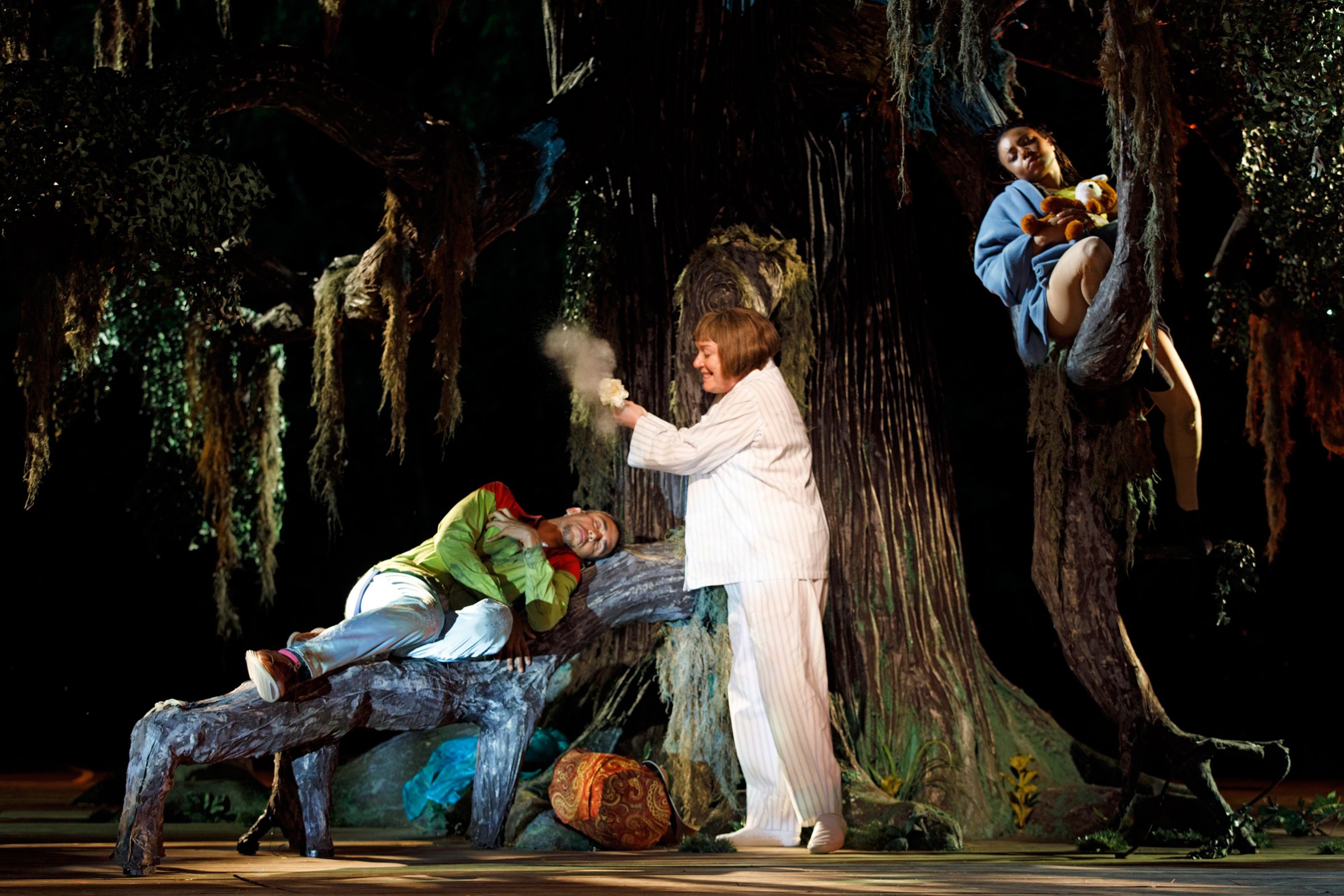
For all of the attempts to modernize Shakespeare – hail Trump as Caesar – some aspects of the Bard’s productions appear set in stone. Such is the case with the mischievous fairies of A Midsummer Night’s Dream.At the age of 15, Mickey Rooney played Puck in a lavish Hollywood production, and a teenage Laurence Olivier dazzled the audience with his portrayal of Shakespeare’s “shrewd and knavish sprite” in a student production at Oxford. In Shakespeare’s day, Puck and his fellow fairies were likely played by young boys and today the average age of actors playing Puck is 23, according to Mandy.com, a web site for the performing industry.
So it is jarring when Puck and the fairy tribe first take the stage in the Public Theater’s current production of A Midsummer Night’s Dream, which runs through Aug. 13 in New York City’s Central Park. Puck is played by Kristine Nielsen, an accomplished actor with Carol Burnett-like comic chops. Nielsen is 62. Vinie Burrows, the oldest fairy, is 88. The rest of the fairies are senior citizens as well, including a retired New York City high school English teacher.
Director Lear deBessonet says the atypical casting approach was inspired by the desire to put a fresh stamp on one of Shakespeare’s most frequently produced plays. “There are certain theater tropes that come to exist and in Midsummer Night’s Dream you are up against a lot of them,” she says. She very much did not want to paint the fairies green. “The stereotype of the fairies is lithe young people in glittery unitards, sort of sprawling around and I’ve never found that to be magical. What’s is magical to me is my grandmother.”
Casting the senior citizens as fairies allowed deBessonet to explore the notions of mortality and magic that permeate a play filled with spells and love-inducing potions. “For me the thesis statement is that magic isn’t that thing that happens invisibly, someplace else. Magic is already here if you have the eyes to see it, in your neighbor, your grandmother, the person sitting next to you on the subway.”
She was also intrigued by the growing body of research on the benefits of being playful as an adult. Life has setbacks and disappointments as well as triumphs, and one of the best protections to being dealt a blow is to have sense of humor about it, she says.
In another contrast to the tight-wearing fairies of most productions, Puck and the others are outfit in pajamas, adding another layer of familiarity and doddering mortality to the proceedings. Nielsen said she was initially leery of playing Puck — ”I had in my mind all those dancer-like bad boys who played Puck” — but that the pajamas and night clothes gave a sense of freedom, plus “not having to see my body in tights.”
The Public’s production is not the first to age Midsummer’s fairies.Columbia University’s James Shapiro, a leading authority on Shakespeare and the Public’s Shakespeare Scholar in Residence, notes that a 2015 production by Dublin’s Abbey Theatre was set in a nursing home. But he says the version currently running in New York is an excellent vehicle for exploring one of the play’s key themes, that love in different stages of life takes on different forms. “This is a very fresh and original production, which is hard to do,” Shapiro says.
And it adds another dimension for both audience and actors alike. “Not to be macabre about it,” says Nielsen, “but we all look around and found that there are a lot of angels and fairies that we have lost that are always there and looking out for us.”
More Must-Reads From TIME
- The 100 Most Influential People of 2024
- Coco Gauff Is Playing for Herself Now
- Scenes From Pro-Palestinian Encampments Across U.S. Universities
- 6 Compliments That Land Every Time
- If You're Dating Right Now , You're Brave: Column
- The AI That Could Heal a Divided Internet
- Fallout Is a Brilliant Model for the Future of Video Game Adaptations
- Want Weekly Recs on What to Watch, Read, and More? Sign Up for Worth Your Time
Contact us at letters@time.com